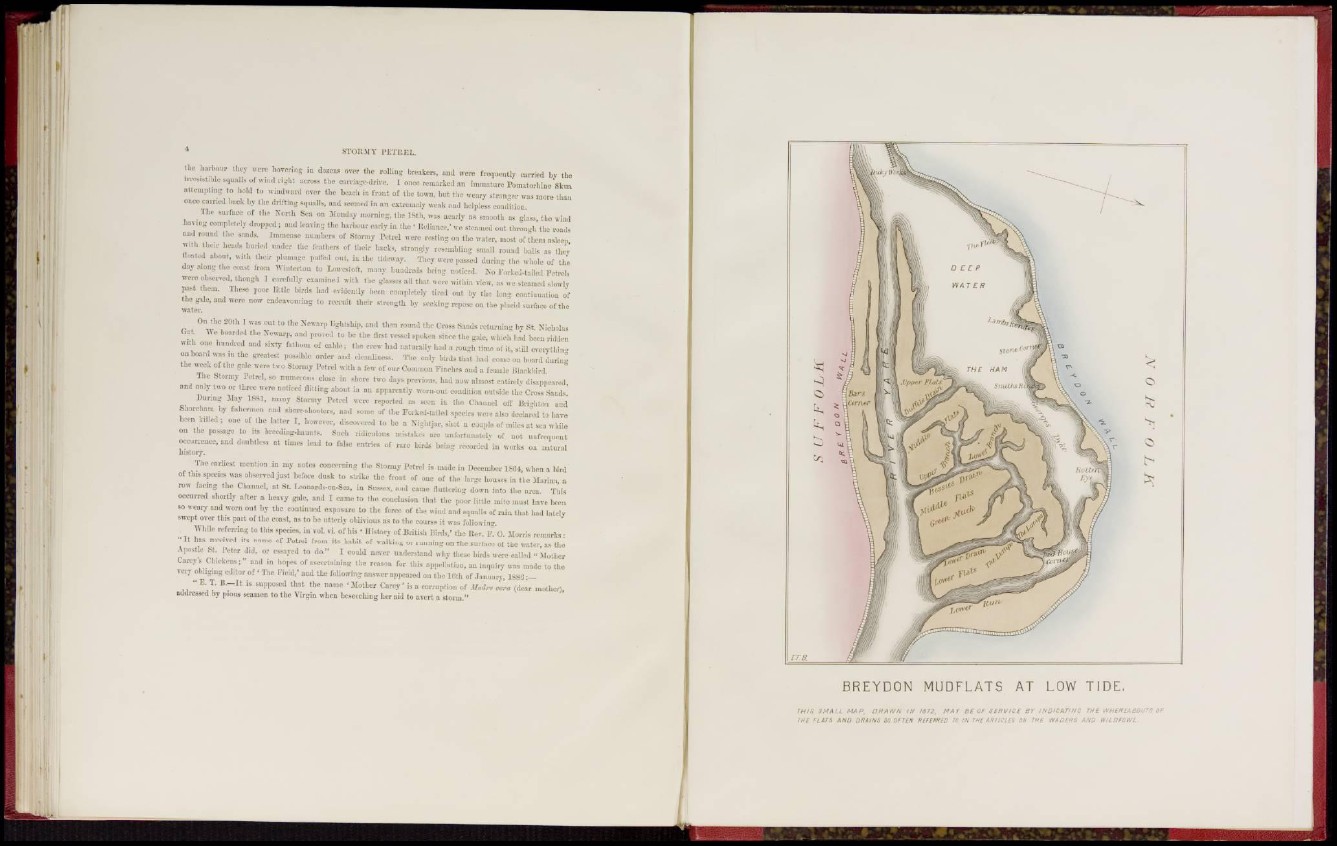
STORM V PETREL.
the harbour they were hovering in dozens over the rolling breakers, and ivere frequently carried by the
irresistible squills of wind right across the carriage-drive. I once remarked an immature Pomatorhiue Skua
attempting to hold to windward over the beach in front of fhe town, but the weary stringer was more than
once Carried back by the drifting squalls, and seemed in an extremely weak and helpless condition.
The surface of the North Sea on Monday morning, the 18th, was nearly as smooth as glass, the wind
having completely dropped ; and leaving the harbour early in the ' llelianee,' wo steamed out through the roads
and round the sands. Immense numbers of Stormy Petrel were resting on the water, most of them asleep,
with their beads buried under the feathers of their backs, strongly resembling small round balls as they
floated about, with their plumage puffed out, in the tideway. They were passed during the whole of the
day along the coast Irom Winterton to Lowestoft, many hundreds being uotieed. No Forke.l-taile.l Petrels
were observed, though I carefully examined with the glasses all that were within view, as we steamed slowly
past them. These poor little birds bad evidently been completely tired out by the long cmtiuualion of
the gale, and were now endeavoitiing to recruit their strength by seeking repose on the placid surface of the
On the 20th I was out to the Newarp lightship, and then round the Cross Sands retailing by St. Nicholas
Oat. TVe boarded the Newarp, and proved to be the first vessel spoken since the gale, which had beeu ridden
with one hundred and sixty fathom of cable; the crew bad naturally had a rough time of it, still everything
on board was in the greatest possible order and cleanliness. The only birds that had come on board during
the week of the gale were two Stormy Petrel with a few of our Common Finches and a female Blackbird.
The Stormy Petrel, so numerous close in shore two days previous, had now almost entirely disappeared,
and only two or three were noticed Hilling about in an apparently worn-out condition oulside the Cross Sands.
During May 1891, many Stormy Petrel were reported as seen in the Channel off Brighton and
Shoreham by fishermen and shorc-shootcrs, and some of the Forked-tailed species were also declared to have
been killed ; one of the latter I, however, discovered to be a Nightjar, shot a ouple of miles at sea whilo
on the passage to its breeding-haunts. Such ridiculous mistakes are unfortunately of not unfrequent
occurrence, and doubtless at times lead to false entries of rare birds being recorded in works on natural
history.
The earliest mention in my notes concerning the Stormy Petrel is made in December 1884, when a bird
of this species was observed just hetlfl dusk to strike the front of one of the large houses in the Marina, a
row facing the Channel, at St. Leonards-on-Sea, in Sussex, and camn fluttering down into the area. This
occurred shortly after a heavy gale, and I came to the conclusion that the poor little mite must have been
so weary and worn out by the continued exposure to the force of the wind and squalls or rain that bad lately
swept over this part of the coast, as to be utterly oblivious as to the course it was following.
While referring to this species, in vol. vi. of his ' History of British Birds,' the Rev. 1'. O. Morris remarks:
" I t has received its name of Petrel from its habit of walking or running on the surface of the water, as tho
Apostle St. Peter did, or essayed to do." I could never understand why these birds were called " Mother
Carey's Chickens ; " and in hopes of ascertaining the reason for Ibis appellation, an inquiry was made to tho
very obliging editor of ' The Field,' and the following auswer appeared on the Ktib of January, 1880:—
" E . T. B.—It is supposed that the name 'Mother Carey' is a corruption of Sladre cora (dear mother),
addressed by pious seamen to the Virgin when beseeching her aid to avert a storm."